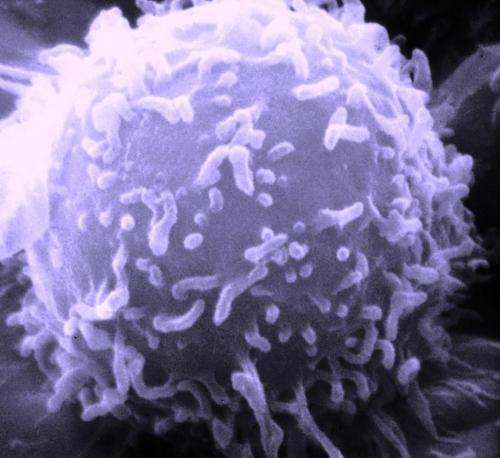September 9, 2016 report
Study reaffirms the belief that malignant cell behavior is influenced by the tumor tissue of origin

(Medical Xpress)—A team of researchers affiliated with several institutions in the U.S. has conducted a study of cancer in mice and found evidence that reaffirms results from prior research suggesting that malignant cell behavior is influenced by both genetic mutations and the tumor tissue of origin. In their paper published in the journal Science, the team describes their experiments with mouse models and the means by which lung and pancreatic tumors get the nitrogen they need to survive and the differences they found. Karen Vousden and Ming Yang with Cancer Research UK Beatson Institute offer an in-depth look at the work done by the team in a Perspective piece published in the same journal issue.
As Vousden and Yang note, it was not that long ago that the medical community believed that defining cancers by the organ in which they originated was all that was needed to define a treatment strategy. Since that time, many studies have shown that cancerous tumors can also be grouped depending on the type of genetic alterations that occur as they develop, which has meant developing therapies that take both aspects of tumors into account. In this new effort, the researchers have undertaken a study that has shown that the tissue in which a tumor first appears is, indeed, as important as the mechanism that drives mutations. To come to these conclusions, they used engineered mouse models for studying two types of tumors: lung and pancreatic. They then looked at the means by which each was able to get the nitrogen they needed to survive.
The researchers noted that prior research had shown that pancreatic tumors were associated with heighted levels of a certain type of amino acid, which was due to the breakdown of natural tissue—the result was more nitrogen for the tumor. They then isolated both pancreatic and lung tumor cells and exposed them to that same amino acid and found that the lung tumor cells did not receive as much nitrogen as did the pancreatic tumor cells, suggesting that the lung tumor cells were accustomed to getting their nitrogen from a different source. Vousden and Yang suggest this finding not only offers more evidence of the role that tumor tissue origin plays in tumor development, but that it might also lead to the development of a biomarker for highlighting early areas of tumor growth.
More information: J. R. Mayers et al. Tissue of origin dictates branched-chain amino acid metabolism in mutant Kras-driven cancers, Science (2016). DOI: 10.1126/science.aaf5171
Abstract
Tumor genetics guides patient selection for many new therapies, and cell culture studies have demonstrated that specific mutations can promote metabolic phenotypes. However, whether tissue context defines cancer dependence on specific metabolic pathways is unknown. Kras activation and Trp53 deletion in the pancreas or the lung result in pancreatic ductal adenocarinoma (PDAC) or non–small cell lung carcinoma (NSCLC), respectively, but despite the same initiating events, these tumors use branched-chain amino acids (BCAAs) differently. NSCLC tumors incorporate free BCAAs into tissue protein and use BCAAs as a nitrogen source, whereas PDAC tumors have decreased BCAA uptake. These differences are reflected in expression levels of BCAA catabolic enzymes in both mice and humans. Loss of Bcat1 and Bcat2, the enzymes responsible for BCAA use, impairs NSCLC tumor formation, but these enzymes are not required for PDAC tumor formation, arguing that tissue of origin is an important determinant of how cancers satisfy their metabolic requirements.
© 2016 Medical Xpress
















